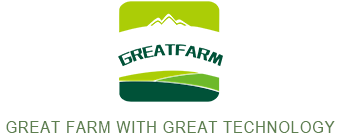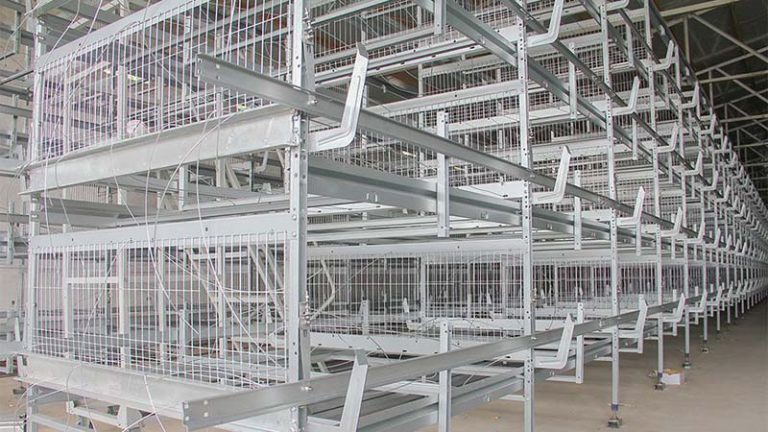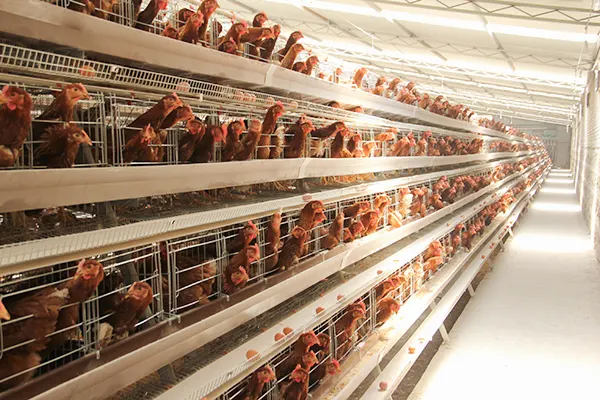Summary of summer ventilation tips and problems for chicken houses
In summer ventilation and cooling of chicken houses, the most common problems are difficulty in cooling and heat stress in chickens. There are also cold stress problems in some chicken houses, especially broiler houses and laying hen brooding houses. These problems are mainly caused by wind speed that is too low or too high, wind direction is wrong, and humidity is too high. Summary analysis shows that there are both configuration reasons and improper operation reasons. We will analyze these issues one by one below.
- The temperature is not high, but heat stress occurs Common phenomenon: Why are the chickens in other people’s chicken houses fine at 28°C? Why do the chickens in my chicken coop have their mouths open when the temperature is 28°C? The crux of the problem: The wind speed behind the chicken is too low and the body temperature of the chicken is high. When the temperature inside the house is 28°C, assuming the relative humidity inside the house is 70% and the wind speed is 2m/s, the chickens’ sensory temperature is 22~23℃; when the wind speed is 1.5m/s, the chickens’ sensory temperature is 24~24℃ 25℃; wind speed is 1m/s, and the chicken’s body temperature is 25.5~26℃.
- Reason 1: Some farms only consider the general high temperature conditions in summer and ignore the high temperature and high humidity climate in order to save investment. There are few fan configurations. In hot and humid weather, the cooling efficiency of wet curtains is low, and the only way to reduce the body temperature of chickens is to increase ventilation.
- Reason 2: The fan has poor quality, unstable performance, and low exhaust efficiency under high negative pressure conditions. For example, some fans have a 0pa static pressure exhaust capacity of 43,000m³/h marked on the nameplate. However, due to the shape and material of the fan blades, they are not strong enough. When operating at -20pa negative pressure, the exhaust capacity is only 30,000m³/h. , far lower than the general data of 37000m³/h.
- Reason 3: The fan lacks maintenance, the bearings are worn, the triangle conveyor belt is loose or blocked by chicken feathers, and if it is not replaced and cleaned in time, the exhaust efficiency of the fan decreases. Or the fan is aging and not replaced in time.
- Reason 4: Calculation error, too few fan configurations. I have seen a large modern broiler farm with stacked cages. The chicken house size is 100m19m4.2m~6m. There are 24 longitudinal tunnel fans. The wind speed in the walkway is 3.1m/s. The wind speed at a depth of 50cm inside the cage is only 0.75. m/s, the summer feeding effect is not very good. If the chicken farm is built in a dry climate area in the northwest, the wet curtain can reduce the temperature inside the house to 23~24°C. This configuration has no problem in cooling in summer. However, the chicken farm is actually built in a coastal area, where the average humidity in summer is above 80%. The evaporative cooling efficiency of the wet curtain is low, and it mainly relies on fans for ventilation and cooling. Obviously, there are few fans.
- Improvement methods: maintain frequently, even if you replace bearings, V-belts, and clean chicken feathers; replace fans that have a long service life and low exhaust efficiency; if the configuration is too small, increase the fan configuration, and the configuration calculation must be based on the requirements of extreme high temperature and high humidity weather based on the wind speed.
- Reduction in feed intake Common phenomenon: The feed intake of chickens in a local area not only does not increase, but temporarily decreases, and the chickens in this area are underweight. This phenomenon is generally seen in chicken houses with flat net beds.
- Reason 1: The design wind speed is too high. When designing the ventilation configuration, the highest data of 2.5m/s was used, and air leakage compensation was added by 0.25m/s, but the wind resistance effect of the net bed frame was ignored. In addition, the wind speed in the middle of the chicken house will be greater than the wind speed on both sides. When the fan is fully turned on, the wind speed behind the chicken in the local area will reach more than 3m/s. When the wind speed behind the chicken is higher than 2.5m/s, the feed intake of the chicken will be slightly and temporarily reduced, but it will recover soon; when the wind speed behind the chicken is higher than 3m/s, the feed intake will be significantly reduced. decline.
- Improvement method: Install manual switches on 10~15% of the fan lines as backup. They are normally closed and turned on in extreme high temperature and high humidity weather, or when other fans fail.
- Reason 2: The fans are improperly grouped. There are too many fans controlled by the last group and they are turned on frequently. The wind speed will suddenly increase, and the wind speed will fluctuate greatly, resulting in a decrease in the stress feed intake of the chickens. For example, in a chicken house, there are 5 side wall fans and 8 longitudinal tunnel fans. If a 5-level ventilation controller is used, there will be 2 sets of side wall fans and 3 sets of longitudinal tunnel fans (2/2/4 or 2/3/3 ), there will inevitably be a wind speed difference of 0.8~1m/s.
- Improvement method: Replace the environmental controller, add fan groups, and ensure that the maximum difference in wind speed does not exceed 0.5m/s.
- Reason 3: There are no deflectors at the wet curtain air inlets on both sides, and the inlet wind speed is 3~5m/s. Such a high wind speed blows directly to the chickens, causing stress.
- Improvement method: configure thermal insulation deflectors to divert air in summer so that the air flows diagonally upward without directly blowing the chicken, and it is also insulated in winter.






